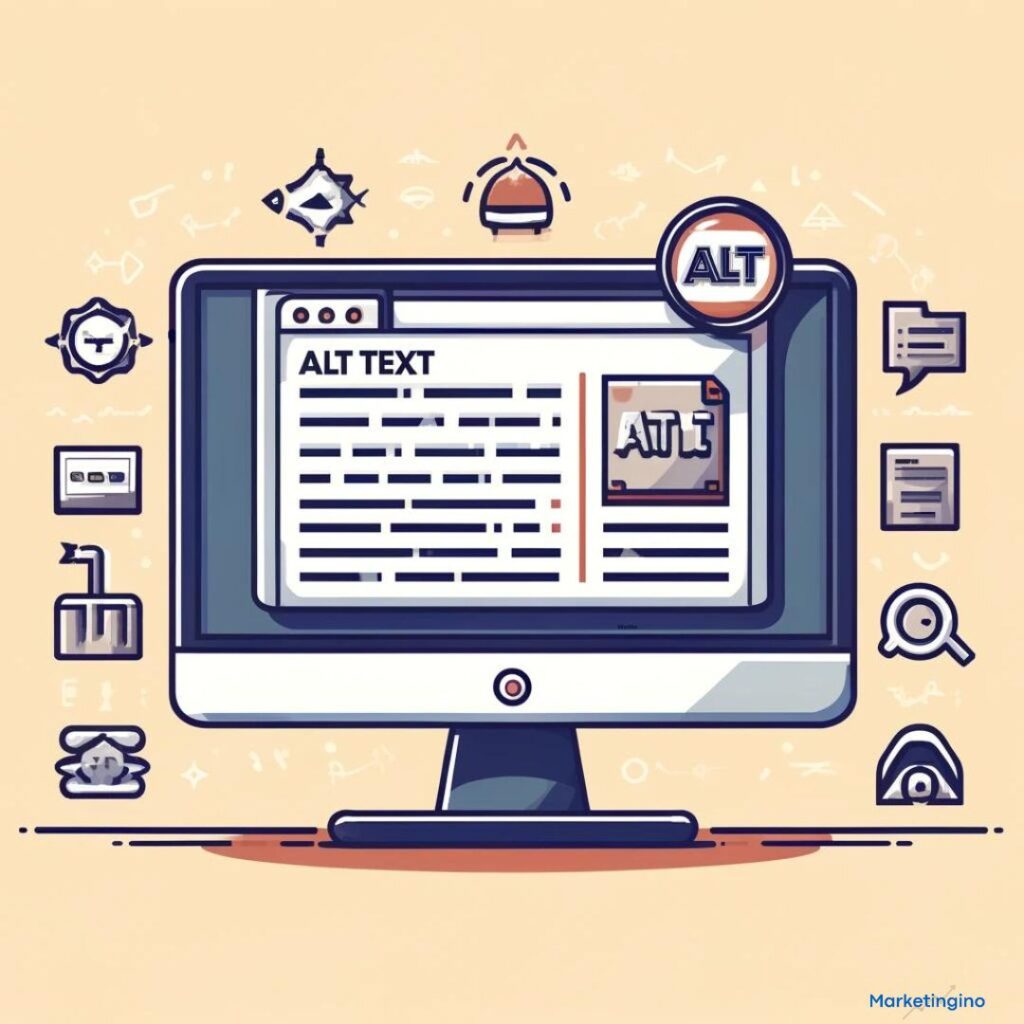Alt text, or alternative text, is a brief written description of an image that serves a vital role in making online content accessible to individuals who are visually impaired. It also benefits search engine optimization (SEO) by providing context to search engines about the content of an image.
What is Alt Text?
Alt text is an HTML attribute applied to image tags to describe the appearance and function of an image on a webpage. This description is used by screen readers to assist visually impaired users in understanding what the image represents. Additionally, alt text helps search engines index and rank images properly, contributing to the overall SEO of a website.
How Alt Text Works
- Accessibility: When a screen reader encounters an image, it reads out the alt text to describe the image to the user. This allows visually impaired individuals to gain context and understanding of the image content.
- SEO: Search engines use alt text to comprehend the content of an image, which helps in indexing and ranking the image in search results. Relevant and descriptive alt text can improve a website’s SEO performance by making images more discoverable.
- Image Loading Issues: If an image fails to load due to technical issues, the alt text is displayed in place of the image, providing users with information about what was intended to be shown.
Best Practices for Writing Alt Text
- Be Descriptive: Clearly describe the content and purpose of the image. Include important details that convey the image’s context to the user.
- Keep it Concise: While being descriptive, keep the alt text concise. Aim for a brief sentence that encapsulates the essence of the image.
- Use Keywords Wisely: Incorporate relevant keywords to improve SEO, but avoid keyword stuffing. The primary goal is to provide a useful description.
- Avoid Redundancy: Do not start alt text with phrases like “image of” or “picture of.” Screen readers already identify it as an image. Jump straight into the description.
- Contextual Relevance: Ensure that the alt text aligns with the surrounding content and provides meaningful information in context.
- Functional Descriptions: For functional images like buttons or links, describe the action or function rather than the visual details. For example, “search icon” or “submit button.”
Examples of Effective Alt Text
- Descriptive Image:
- Image: A picture of a sunset over a mountain range.
- Alt Text: “Sunset over the Rocky Mountains with a golden sky.”
- Functional Image:
- Image: A magnifying glass icon used as a search button.
- Alt Text: “Search button.”
- Informative Image:
- Image: A graph showing the monthly sales growth.
- Alt Text: “Bar graph illustrating monthly sales growth from January to December.”
Benefits of Using Alt Text
- Enhanced Accessibility: Alt text ensures that visually impaired users can access and understand visual content, promoting inclusivity.
- Improved SEO: Well-written alt text helps search engines index images accurately, potentially improving a website’s search rankings.
- Better User Experience: Providing alt text enhances the overall user experience, especially in cases where images fail to load.
- Regulatory Compliance: Using alt text helps comply with accessibility standards and regulations, such as the Web Content Accessibility Guidelines (WCAG).
Challenges of Using Alt Text
Despite its advantages, using alt text presents some challenges:
- Time-Consuming: Writing descriptive and accurate alt text for every image on a website can be time-consuming, especially for content-rich sites.
- Balancing Detail and Brevity: Striking the right balance between being descriptive and concise can be challenging.
- Maintaining Consistency: Ensuring consistent quality and relevance across all alt text entries requires ongoing attention and effort.
Alt text plays a crucial role in enhancing web accessibility and improving SEO. By providing clear and descriptive text for images, websites can ensure that all users, including those with visual impairments, have access to important visual information. Additionally, well-crafted alt text helps search engines understand and index images, contributing to better search engine rankings. As the digital landscape continues to prioritize inclusivity and accessibility, incorporating effective alt text remains an essential practice for web developers and content creators.




